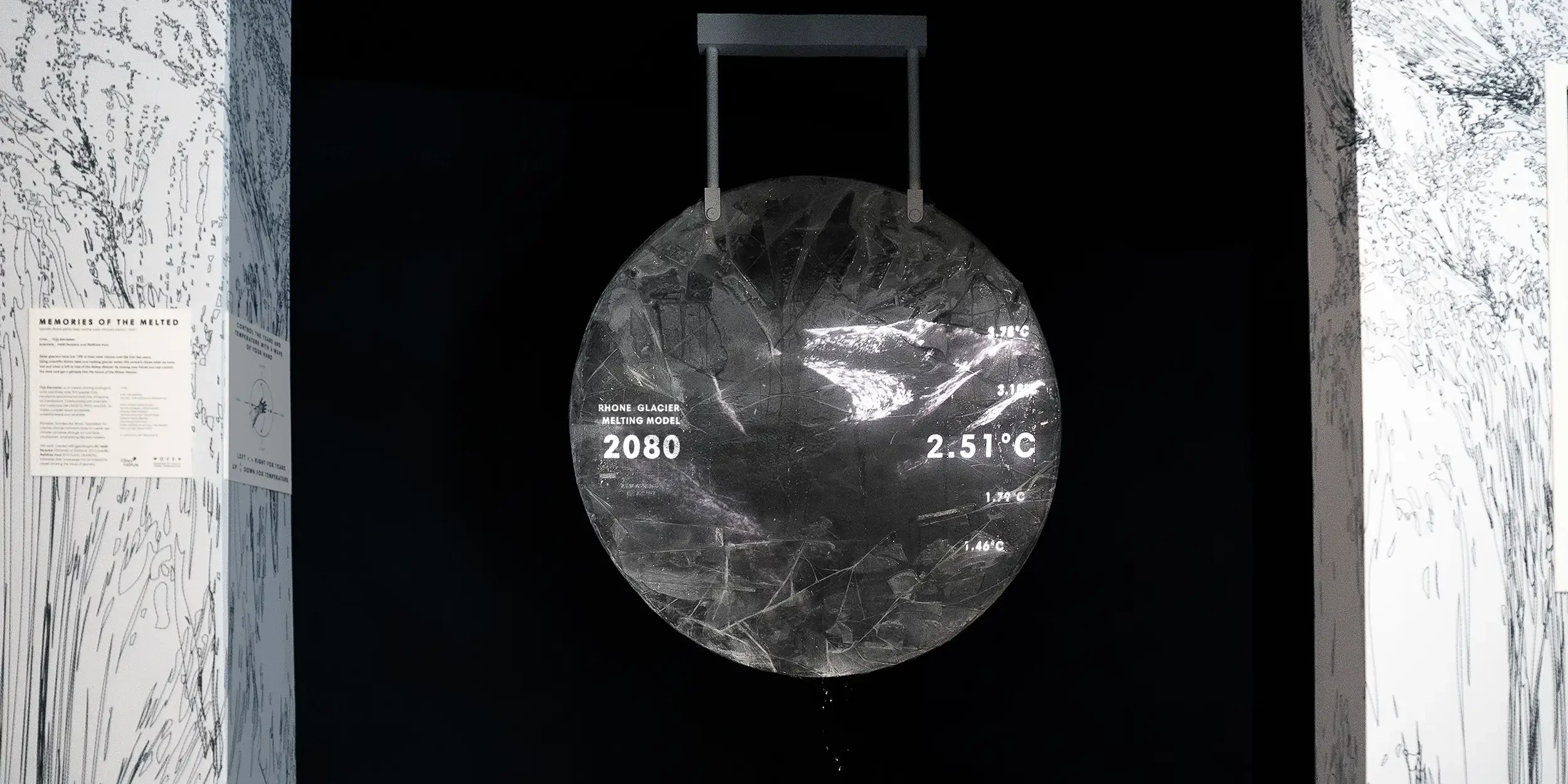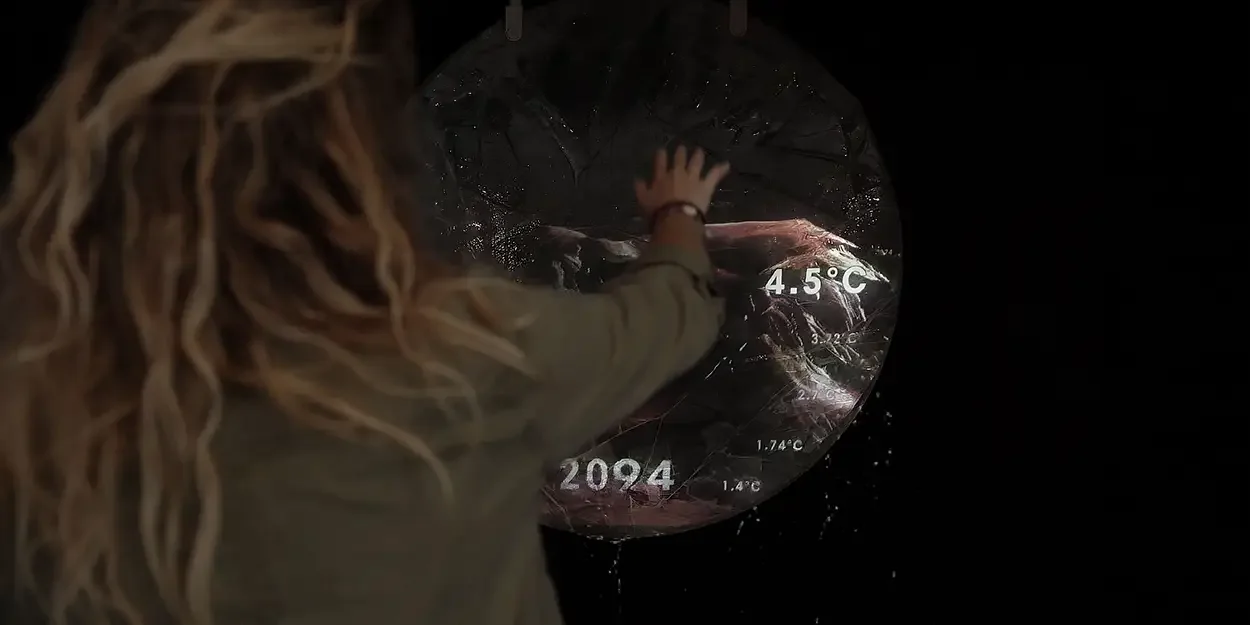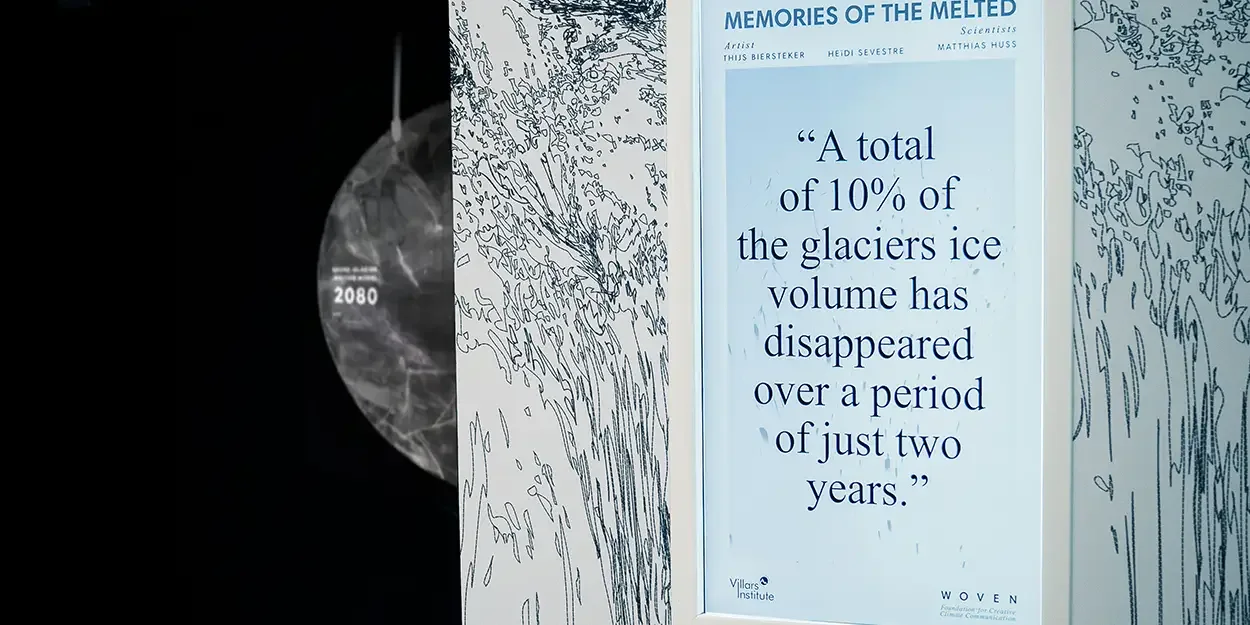Pour Thijs Biersteker, artiste écologique primé, l’art peut vraiment changer le monde. M. Biersteker a collaboré avec le Villars Institute pour sa nouvelle œuvre, Memories of the Melted, qui a été présentée en avant-première au Montreux Jazz Festival.
Un artiste, trois fois conférencier TED, s’est donné pour mission de changer le discours sur la façon dont nous réagissons à l’immensité de la crise qui touche le climat et la biodiversité.
Dans son dernier travail, Memories of the Melted, Thijs Biersteker a travaillé en collaboration avec Heïdi Sevestre et Matthias Huss, les plus éminents glaciologues de Suisse, pour transformer des données scientifiques sur le climat en œuvre d’art qui montre clairement que nous sommes à un point de basculement. Il s’agit d’une alchimie destinée à rendre la crise environnementale tangible, émotionnelle et à laquelle on peut s’identifier. Comme Mme Sevestre l’a dit : « Notre avenir dépend de la santé de nos glaciers, qui est directement influencée par les choix que nous faisons aujourd’hui ». Et M. Huss d'ajouter : « Les glaciers sont les ambassadeurs du changement climatique. Visualiser leur déclin rapide à l’aide de l’art est un moyen fantastique de faire passer un message fort au monde ».
L’œuvre a été exposée au Studio Spotlight du Villars Institute pendant le Montreux Jazz Festival, avant d’être diffusée à travers le monde grâce à des données locales introduites pour chaque lieu, pour illustrer la situation environnementale locale.
L’artiste néerlandais estime qu’il est essentiel (et les scientifiques sont d’accord) d’aller au-delà de notre réponse intellectuelle et de se brancher sur nos émotions si nous voulons cesser de voir la crise climatique comme quelque chose « d'extérieur à nous », indique M. Biersteker, qui a également fondé la Woven Foundation pour une communication créative sur le climat. « Je crois que lorsque la science et l’art se combinent, ils peuvent apporter un changement. C’est en associant les faits et l’émotion que le changement s’opère ».
Ses installations ont couvert des défis allant de la pollution de l’air et des plastiques à la perte de la biodiversité et à la relation entre l’ère numérique et ses demandes voraces en énergie. Ce nouveau travail puissant, créé en collaboration avec le Villard Institute pour la 58ème édition du Montreux Jazz Festival, nous donne un aperçu de la réalité de la fonte de nos glaciers, comme si c’était un choc froid et brutal dans un monde qui se réchauffe rapidement.
La propre conscience environnementale de M. Biersteker s’est éveillée lorsque, en tant que surfeur, il a été horrifié par les déchets plastiques qui jonchaient l’eau, ce qui l’a amené à créer une œuvre d’art composée de morceaux interactifs de plastique de l’océan. Depuis lors, il a collaboré avec les plus grandes institutions mondiales telles que l’UNESCO et d’autres, afin de donner une portée à leurs recherches. Sa mission est de sensibiliser le public en utilisant une gamme unique de disciplines dans l’espoir d’écrire de nouvelles histoires pour inspirer un changement.
Cette vision d’un avenir plus durable résonne avec celle du Villars Institute, dont le directeur exécutif, Lee Howell a rencontré M. Biersteker pour la première fois lors d’une conférence à Dubaï en 2022. En discutant de l’intersection et de la fusion potentielle de l’art et de la science, il semblait naturel de collaborer autour d’une œuvre qui pourrait mettre en avant les thèmes de la responsabilité, de la durabilité et de l’importance de travailler ensemble.
Selon M. Howell, « Les artistes et les scientifiques pensent tous deux que dire la vérité est plus important que le pouvoir, Thijs réunit ces deux voix et c’est très puissant. Quand je regarde Thijs, je vois quelqu’un qui est capable de combiner les forces des deux et de les appliquer à la question la plus importante de l’ère moderne : la santé et l’avenir de la planète ».
L'iconographie , et la réalité, de la fonte des glaciers est particulièrement poignante à Villars et à Montreux, toutes deux situées sur l’eau provenant d’anciennes couches de glace.
L’idée de Memories of the Melted est née lorsque M. Biersteker a lu un rapport montrant que les glaciers suisses avaient perdu 10 % de leur volume en seulement deux années.
M. Biersteker insuffle la vie aux données climatiques grâce à un modèle interactif en tant réel basé sur l’environnement de la Suisse. Les spectatrices et les spectateurs peuvent manipuler l’œuvre avec de simples mouvements de la main – en parcourant les années ou en augmentant la température par une vague – ce qui rend les données tangibles et immédiates et transforme le philosophique et l’abstrait en un coup de poing viscéral qui appelle à l’action. L’œuvre d’art combine les dernières technologies, notamment l’IA, et la génération d'images en temps réel pour donner vie aux données de fonte et à l’avenir qui pourrait nous attendre.
Comme ses autres œuvres, Memories of the Melted s’efforce d’étendre la portée de la recherche et des résultats au public, créant ainsi une nouvelle génération de communication scientifique capable à la fois d’intéresser un grand nombre de personnes et de donner plus de pouvoir aux décideuses et aux décideurs et aux scientifiques. « Les scientifiques veulent montrer la complexité et je veux rendre cette complexité aussi convaincante que possible », explique M. Biersteker.
C’est cette alchimie qui peut transformer ce qu’il appelle le « fossé de l’imagination », qu’il a décrit dans sa conférence TED de 2022 comme une réponse à la nature désormais accablante du changement climatique. L’inimaginable, note-t-il, est devenu l’irrecevable, mais l’art peut nous aider à imaginer comment chacun de nos mouvements et de nos choix se répercute sur notre environnement.
M. Biersteker observe également qu’aujourd’hui, nous nous tournons vers des données, et n’utilisons pas nos propres yeux, pour savoir ce qui se passe dans le monde. En combinant les données et l’art, il replace notre regard sur le tangible et nous permet de voir d’une nouvelle manière avec une clarté sans équivoque.
2025 ayant été déclarée Année internationale de la préservation des glaciers, Thijs espère que ce nouveau travail démontrera que l’espoir subsiste et qu’en mettant le pouvoir entre nos mains, nous pouvons vraiment faire la différence en nous engageant pleinement à tous niveaux.





